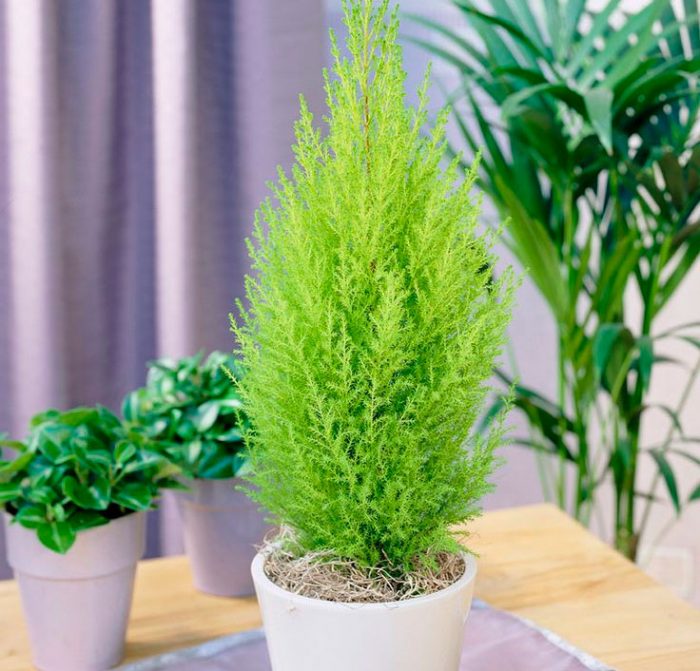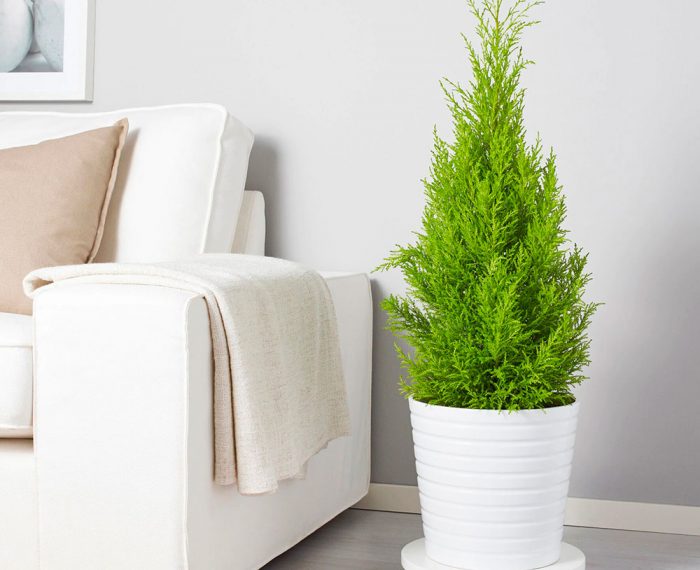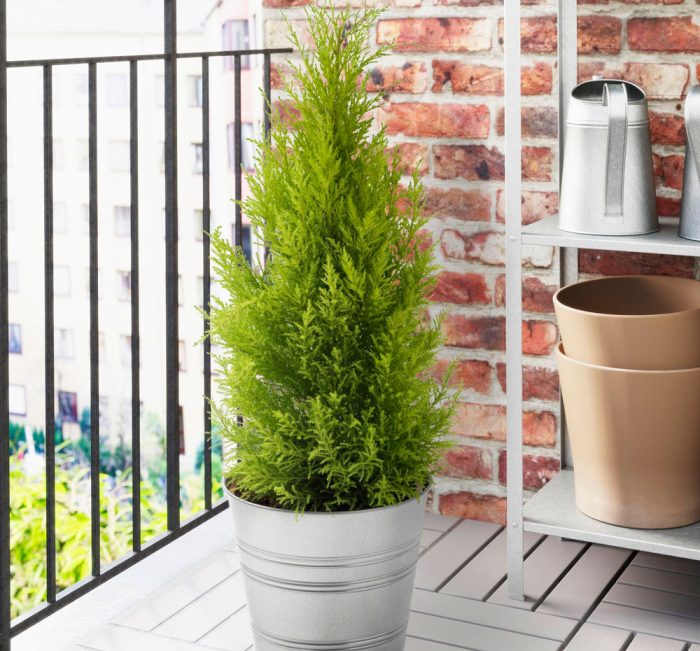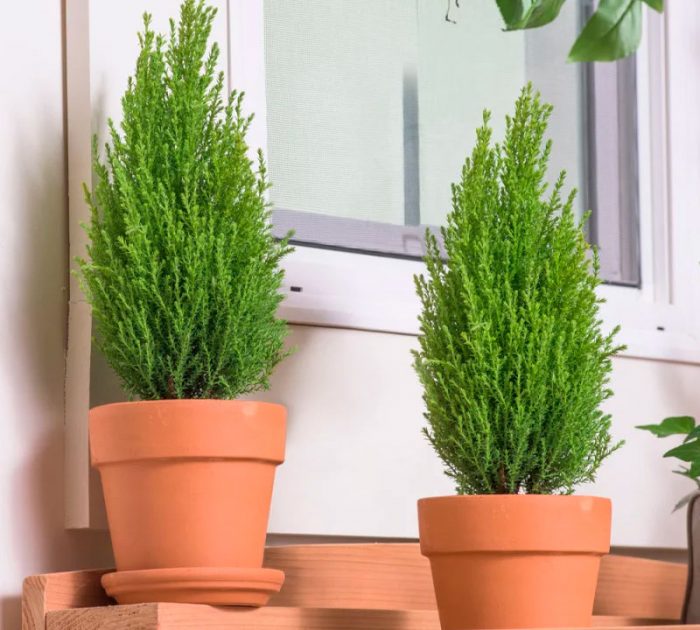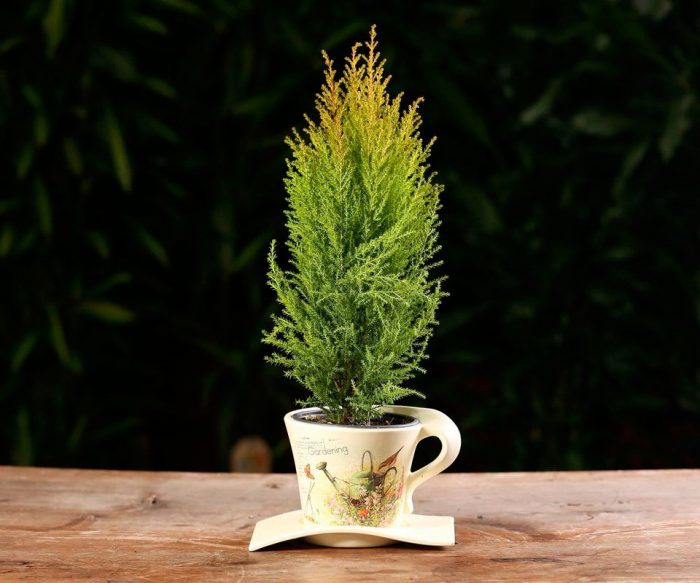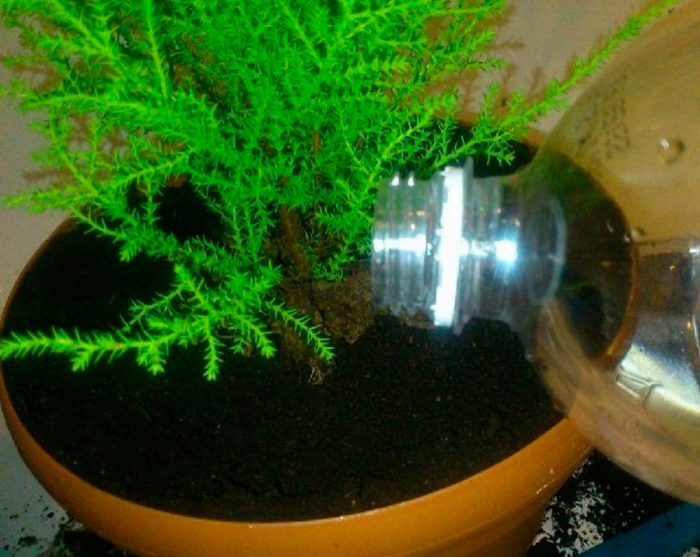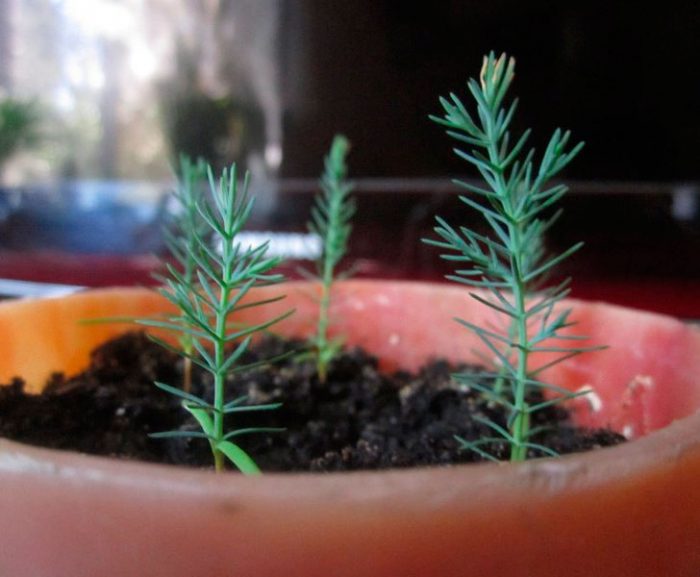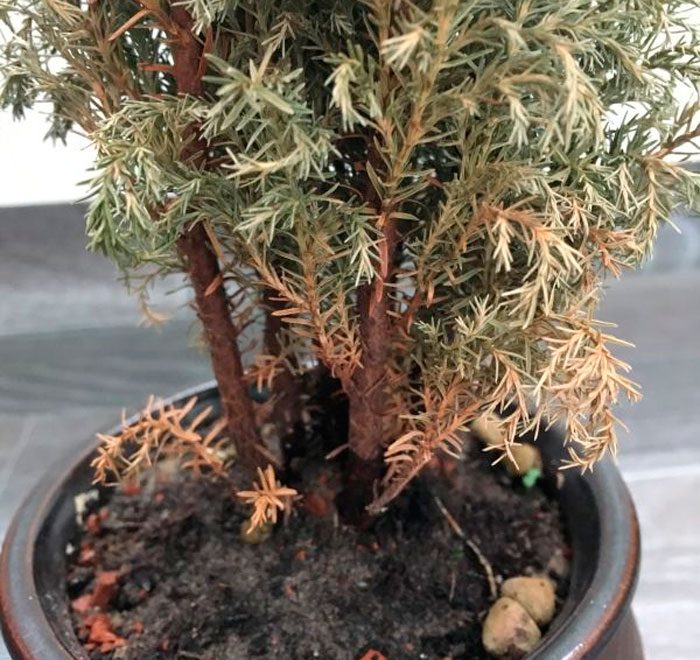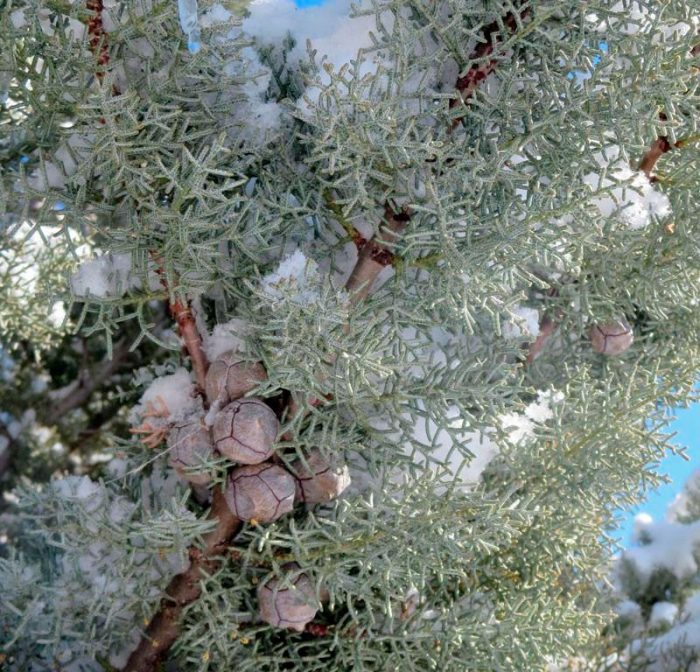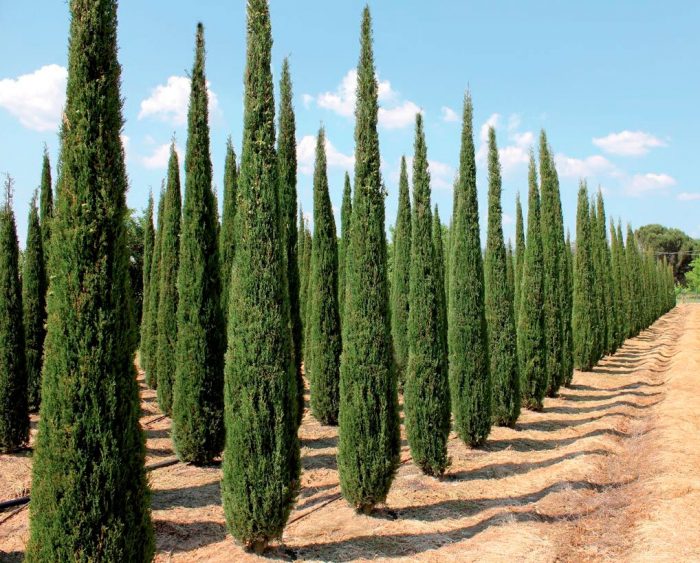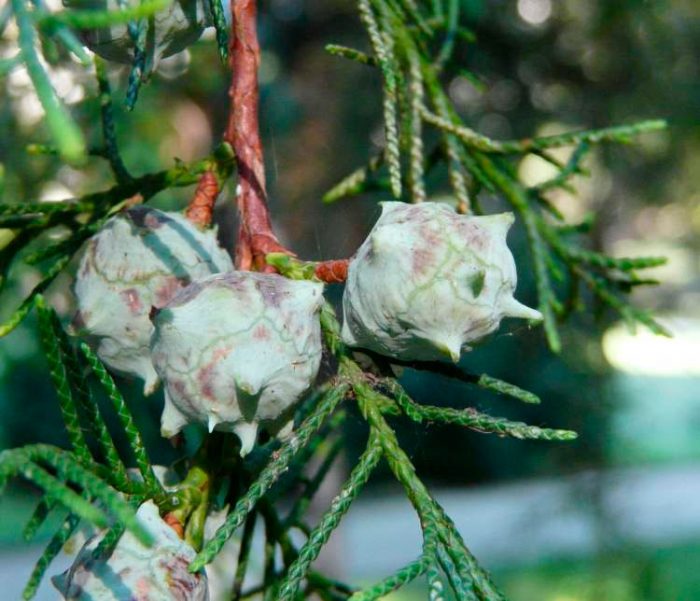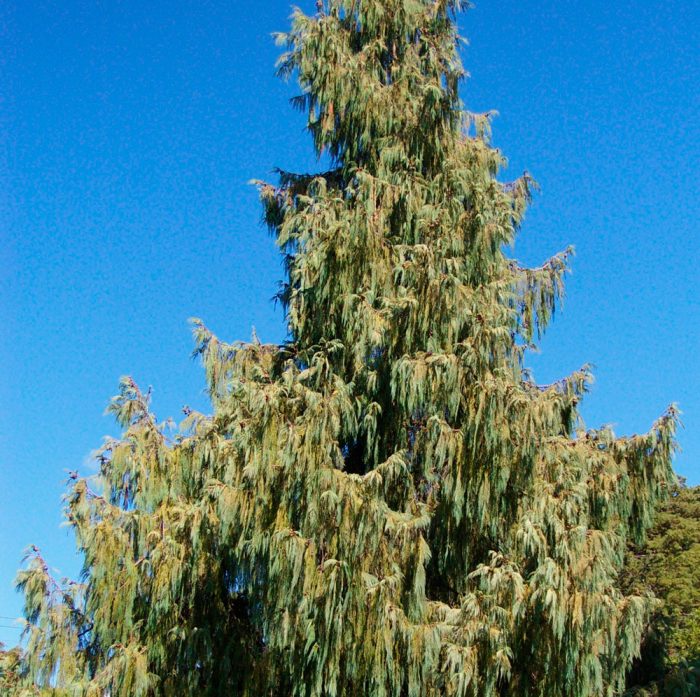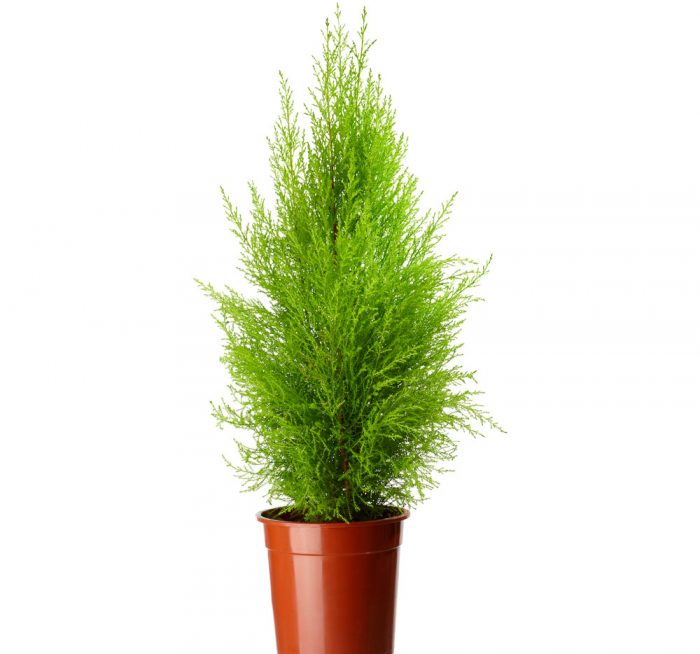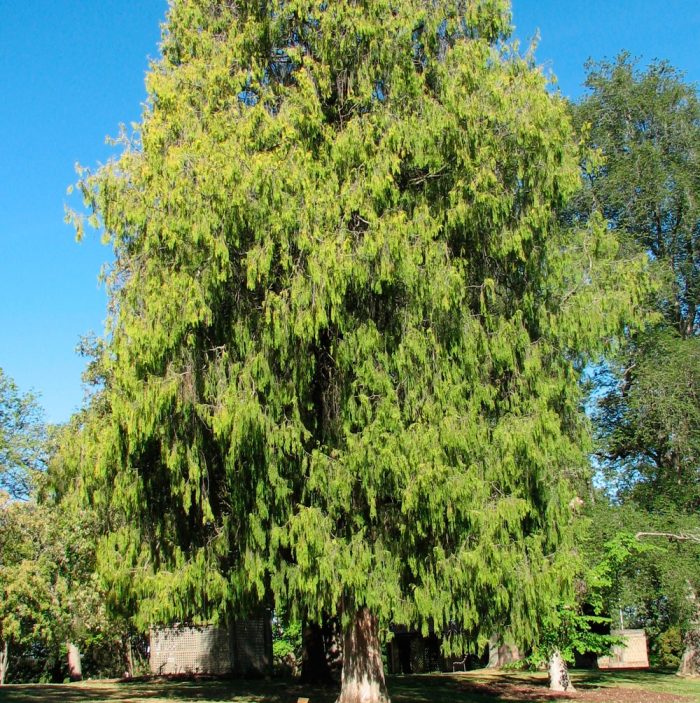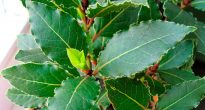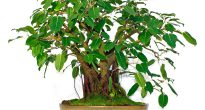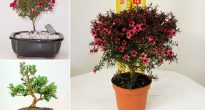The cypress plant (Cupressus) is a member of the Cypress family. This genus is represented by evergreen trees and shrubs, whose crown shape is pyramidal or spreading. This plant has existed on planet Earth for a long time, its remains have even been found in the layers of the Tertiary period. According to information taken from various sources, this genus unites from 14 to 25 species. Some experts believe that cypress comes from the Mediterranean, but other researchers are sure that representatives of this genus have long been found in the subtropics and tropics of North America, for example, in California, because it was brought to European countries from there. However, in support of the theory that the cypress comes from the Mediterranean, there is an ancient Greek legend about a slender young man named Cypress, who killed a horse that belonged to the god Apollo, for which he was turned into a tree. Under natural conditions, such a tree can have a height of 25 to 30 m. However, the plant cultivated in indoor conditions is not very large, since it was bred by breeders as an indoor cypress, for growing in a tub or pot.
Content
Brief description of cultivation
- Bloom... Cultivated as a decorative leafy plant.
- Illumination... In the morning, a diffused, but bright light is needed, and in the daytime partial shade (windows with a north or east orientation are best suited).
- Temperature regime... In the summer - from 20 to 24 degrees, and in the winter - from 5 to 15 degrees.
- Watering... It is necessary to moisten the soil mixture in a container systematically and moderately in the summer, and rarely and with a small amount of water in winter (about 1 time in 7 days).
- Air humidity... It grows normally at the air humidity level typical for living rooms.
- Fertilizer... The plant is fed in spring and summer once every 30 days, for this, mineral fertilizers are used (the concentration of the nutrient solution should be a couple of times less than that recommended by the manufacturer).
- Transfer... Regularly once every couple of years. This procedure is carried out in April – May.
- Reproduction... By cuttings and seed method.
- Pests... False shields, scale insects and spider mites.
- Diseases... If you take care of the plant incorrectly or do not provide it with optimal conditions for growth, then the branches may dry out, the needles may fade or turn yellow, and in some cases even the roots may rot.
Features of home cypress
Ornamental cypress, which is cultivated in pots or tubs, unlike natural shrubs or trees, is not so large. Their crown shape is the same, as are the soft stems, which are covered with scaly foliage on all sides, which has the shape of an elongated rhombus. The leaf plates are dark green with a slight blue tint. The fruit is an egg-shaped cone with thyroid scales, it is under them that the seeds are located.
Often, inexperienced growers take the cypress (Chamaecyparis) for home cypress (Cupressus), which is very similar to it, but has greenish needles. However, there is nothing wrong with that, since the care for both of these plants is practically the same. But before you bring a cypress into your home, you must take into account that it is highly demanding in care and needs special growing conditions.
Cypress tree care at home
In order for a home cypress to grow and develop within normal limits, it will need proper care and suitable growth conditions, which should be as close to natural as possible.
Illumination
Such a southern culture requires a large amount of diffused bright light, but in the afternoon it is recommended to protect it from direct sunlight. Experts advise placing the bush on an east or north orientation window. Despite the fact that in natural conditions cypresses grow under the rays of the scorching sun, only mature bushes and trees can withstand them. And young cypresses grow in the shade of large trees, so the scorching rays of the sun can harm them.
Temperature regime
Best of all, in the summer, such a plant feels at a temperature of at least 20 degrees. In this case, in the summer months, the bush must be moved outside (to the garden or to the balcony). Cypress reacts extremely negatively to stagnant air, so if in summer it grows in your house, then the room must be very often ventilated. On hot days, the bush is moistened with a sprayer about 3 times a day. It also responds well to a warm shower, and it is also recommended to put a pot with a tree on a tray filled with wet sphagnum or pebbles.
Pruning
Over time, as the plant grows, it will need formative pruning to keep it lean and effective. The bush should be pruned in the spring, before its intensive growth begins.
Winter care
In winter, the plant is transferred to a place where it is cool (no higher than 15 degrees). The optimum air temperature for home cypress during this period is from 8 to 10 degrees. In order for the bush to develop normally, when caring for it, it should be remembered that in winter it must be cool, and in summer in a warm place. If in winter the plant is at normal room temperature, and even not far from a working heating device, this can lead to its death. A loggia or an insulated balcony is suitable for wintering cypress. And so that the root system does not accidentally freeze over, the flowerpot is insulated, for this it is covered with pieces of foam or wrapped in rags.
Proper watering
In the spring-autumn period, watering should be abundant, and with the onset of winter, it should be reduced to moderate. Remember that cypress can be damaged by both a lack of moisture and excessive watering. In this regard, experienced flower growers advise, when watering, remember this rule: the lower the air temperature, the less often the soil mixture in the pot is moistened.For example, if the air temperature is about 8 degrees, then the tree is watered once every 1.5 weeks, and if the temperature is 12-14 degrees, then once every 5-7 days.
Top dressing
In the period from May to August, when there is an intensive growth of the tree, it should be fed once every 30 days, using liquid mineral fertilizer for indoor plants. In winter, it also needs to be fed, but they do it once every 6 weeks.
Cypress transplant
While the bush is young, it is transplanted systematically once a year in the spring. It is best to carry out this procedure in April or May. Transplant of older specimens is carried out only if necessary. The bush is transplanted by the transshipment method, since its root system reacts extremely negatively to injury or destruction of a clod of earth. Therefore, when the bush is removed from the container, it is not necessary to remove the soil mixture from the roots.
A suitable substrate should have the following composition: sod and leafy soil, peat and sand (1: 2: 1: 1). At the bottom of the container, for a start, a good drainage layer is made, which should be several centimeters thick. It is sprinkled with a layer of new substrate, after which a bush is placed in the pot, and then all the voids are filled with fresh soil mixture. During transplanting, make sure that the root collar of the plant remains above the surface of the substrate.


Watch this video on YouTube
Reproduction methods
Growing cypress from seeds
It doesn't matter if you bought cypress seeds from the store or collected them yourself, before you start sowing, you need to stratify them. To do this, they are removed on the refrigerator shelf for 3-4 months. Immediately before sowing, the seed is immersed in water for 12 hours, which must be necessarily warm, and it is better to use Epin's or Kornevin's solution for this.
Take a seedling box and at the bottom make a drainage layer of chopped tree bark, which is covered with soil mixture for coniferous crops. Next, the seeds are sown according to the 4x4 centimeters scheme. You can replace the special soil mixture with sawdust or sand, however, slightly grown seedlings will still have to be transplanted into a suitable soil mixture. The crops are harvested in a warm place and make sure that the substrate is moist all the time, but it will be good if at least ½ of the seeds germinate.
After the seedlings have a height of about 50-60 mm, the bushes are transplanted into separate pots, while the root collar of the plants cannot be buried. Then move them to a well-lit place and provide them with timely watering, feeding and humidification from a spray bottle. After only 12 months, the bushes will have a height of about 20-25 centimeters.
Cuttings
Also, cypress can be propagated by semi-lignified or apical cuttings, which remain in sufficient quantity after the tree is trimmed. You only need those segments that have a heel. All the lower leaf plates are cut off from them, and then they are placed in a jar filled with Kornevin's solution. Remove the cuttings from the solution after about 24 hours, wash them under running water and sprinkle the places of the cuts with coal powder. For rooting, cuttings are planted in soil mixture for coniferous crops, deepening them by a third. Then the planted cuttings are watered so that the soil mixture is very well saturated with moisture, and then each cuttings are covered with a transparent cap (a glass jar with a volume of 3 liters). Do not forget to clean the shelter for 1-2 hours twice or three times a week for ventilation. Cuttings should take root after 2 months.


Watch this video on YouTube
Cypress pests and diseases
Pests
Most often, spider mites settle on home cypress (due to excessively low air humidity), and pseudo-scale insects and scale insects can suck juice from its foliage. To destroy such pests, treat the bush with Actellik's solution (1–2 milligrams per liter of water).After 7 days, re-spray the cypress with the same solution.
Possible problems
The cypress growing in indoor conditions is practically not affected by the diseases that are afflicted by trees cultivated in the open field. Most often, problems with it arise from inappropriate conditions for growth or improper care.
- Root rot... If water stagnates regularly in the substrate, then the roots can rot. If the bush is sick, then it will need an urgent transplant into a fresh soil mixture, and do not forget to cut out all the affected areas and make a good drainage layer at the bottom of the new pot. Then, after transplanting, normalize watering, it should not be so frequent and abundant.
- The cypress dries up. If the tops of the foliage turn brown and dry out, this means that:
- the humidity level in the room is very low;
- you water the bush too poorly or the water used for irrigation is of poor quality;
- the plant does not have enough light;
- the room temperature is too low.
If you find the cause of the drying of the foliage and eliminate it, then your tree will stop drying.
- Yellow foliage... This may be due to the lack of nutrients in the substrate. Start feeding the cypress tree properly and everything will return to normal.
Types and varieties of cypress with photo
Not so long ago, experts believed that cypress was not suitable for indoor cultivation. However, flower growers still managed to refute this statement. Every year, more and more apartments are decorated with coniferous crops, and in private houses with terraces or extensive galleries, cypresses are grown even more often. The types of cypress that are most popular with flower growers will be described below.
Arizona cypress (Cupressus arizonica)
This species in natural conditions has a height of about 15 meters, it is distinguished by its photophilousness and resistance to drought. Young shoots are covered with gray bark, and old ones are dark brown, which, moreover, after some time begins to flake off. Thin-pointed leaf plates are colored greenish-gray.
Evergreen cypress (Cupressus sempervirens)
Under natural conditions, only the horizontal form of this species can be found. This plant is resistant to drought and frost (in case of a short cold snap). The pyramidal crown consists of short ascending branches, which are pressed very tightly to the trunk. Reacts extremely negatively to moisture stagnation. Such cypress is highly decorative, and it is very popular in indoor culture, and it is also quite often grown in the open field. There are two varieties of evergreen cypress that are very popular with both gardeners and florists:
- Pyramidal cypress (f. Pyramidalis, f. Stricta)... The crown is dense, narrow-pyramidal in shape, it consists of ascending branches pressed against the trunk. The needles are placed crosswise, and they are very tightly pressed against the branches. Rounded cones in diameter reach 20-30 mm, outwardly they are similar to small soccer balls.
- Horizontal cypress (f. Horisontalis)... Branches extending vertically from the trunk then rise upward, due to which a wide-pyramidal crown is formed.
Lusitanian cypress (Cupressus lusitanica), or Mexican
Unlike other species, the crown shape of this tree is wide-pyramidal, and the branches are hanging and tetrahedral. The bark is brownish-red. This species is thermophilic and does not tolerate cold, and excessively dry air and a lack of moisture in the soil can harm it. There are a large number of decorative forms:
- the form of Bentham (Benthamii) - the shape of the crown is narrow and regular, the needles can be painted in various shades - from gray-gray to rich green, the stems branch in one plane;
- blue uniform (glauca) - the needles are painted in a gray color, and the cones are covered with a bloom of the same shade;
- sad form (tristis) - the shape of the crown is columnar, the branches directed downward are very flexible;
- Knight form (Nightiana) - very similar to the form of Bentham, however, it has a gray needles color.
Kashmir cypress (Cupressus cashmeriana)
This species was introduced from India. It is distinguished by high demands on soil and air moisture. However, it is not very difficult to grow it in room culture.
Large cypress (Cupressus macrocarpa)
This species is best suited for indoor cultivation. The upright trunk is decorated with a pyramidal crown. Many branches extend horizontally from the trunk, which are covered with small dark or pale green leaf plates. The upper branches are lighter in color than the lower ones. The buds can be about 38 mm across.
Weeping cypress (Cupressus funebris)
The cone-shaped crown consists of drooping long stems that are decorated with greenish-gray needles. The small bumps are about 15 mm long.
Often, inexperienced growers consider swamp cypress to be cypress. This plant also belongs to the Cypress family, but it is a representative of a different genus - taxodiums. Its scientific name is taxodium two-rowed, and it is a deciduous coniferous tree, not evergreen (like all types of cypress). Also, kochia scoparia (Kochia scoparia), or summer cypress, which is considered part of the Marevye family, are not cypresses. Despite the fact that the foliage of this plant is very similar to the needles of a cypress, it also refers to deciduous.


Watch this video on YouTube

